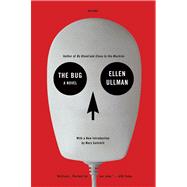
Note: Supplemental materials are not guaranteed with Rental or Used book purchases.
Purchase Benefits
What is included with this book?
Ellen Ullman is an American computer programmer and author. She has written novels as well as articles for various publications, including Harper's Magazine, Wired, The New York Times, and Salon. Her essays and novels analyze the human side of the world of computer programming. Ullman earned a bachelor's degree in English at Cornell University in the early 1970s. She then turned to business programming in the following years. She eventually began writing about her experiences as a programmer in 1995 when she wrote an essay titled "Out of Time: Reflections on the Programming Life." She lives in San Francisco.
The New copy of this book will include any supplemental materials advertised. Please check the title of the book to determine if it should include any access cards, study guides, lab manuals, CDs, etc.
The Used, Rental and eBook copies of this book are not guaranteed to include any supplemental materials. Typically, only the book itself is included. This is true even if the title states it includes any access cards, study guides, lab manuals, CDs, etc.